About Gallbladder
What is the Gallbladder?
The gallbladder is a small, pear-shaped organ located just below the liver in the upper right of the abdomen. It plays a crucial role in digestion and nutrient absorption in the digestive system. The gallbladder is connected to the liver and the small intestine through a series of ducts, including the common bile duct. Bile, a greenish-yellow fluid produced by the liver, is stored and concentrated in the gallbladder until it is needed for digestion.
Importance of the Gallbladder
The gallbladder is a storage and concentration reservoir for bile, an essential digestive fluid. Bile is synthesised in the liver and contains bile salts, cholesterol, bilirubin, and other substances necessary to break down and absorb dietary fats.
When we consume a meal rich in fats, the gallbladder contracts and releases bile into the small intestine through the common bile duct. Bile helps emulsify fats, breaking them down into smaller droplets that can be more easily digested by enzymes called lipases. This process is crucial for absorbing fat-soluble vitamins (A, D, E, and K) and dietary fats, ensuring proper nutrition and overall well-being.
The gallbladder's ability to regulate the release of bile is vital for efficient digestion. It ensures that the right amount of bile is delivered to the small intestine to match the dietary fat content in the food consumed. Without this regulatory function, the digestion and absorption of fats could be compromised, leading to various digestive issues and nutrient deficiencies.
While the gallbladder plays a significant role in digestion, it is not essential for survival. People can lead healthy lives without a gallbladder, but its absence may lead to changes in how fats are processed, requiring some adjustments in diet and lifestyle.
Common Conditions of the Gallbladder
Risk Factors for Gallbladder Problems
Gallbladder problems can be influenced by various risk factors, some of which include:
- Age and Gender: Women, especially those over 40, are more prone to gallbladder issues than men. Hormonal changes, such as during pregnancy or while taking birth control pills, can increase the risk of gallstones.
- Obesity and Diet: A diet high in saturated fats, cholesterol, and refined carbohydrates can contribute to gallstone formation. Obesity is also a risk factor as it can lead to insulin resistance and alterations in lipid metabolism, promoting gallstone development.
- Genetics and Family History: Family history plays a role in determining an individual's susceptibility to gallbladder problems. The risk increases if close family members have a history of gallstones or other gallbladder issues.
- Rapid Weight Loss or Dieting: Losing weight too quickly or engaging in crash diets can increase the risk of gallstone formation. Rapid fat breakdown releases more cholesterol into the bile, promoting gallstone development.
- Sedentary Lifestyle: Lack of physical activity can contribute to gallbladder problems. Regular exercise helps maintain a healthy weight and may reduce the risk of gallstone formation.
- Ethnicity: Certain ethnic groups, such as Native and Mexican Americans, have a higher risk of gallstones.
- Medications: Some medications, like cholesterol-lowering drugs, can increase the risk of gallstone formation.
- Certain Medical Conditions: Conditions like diabetes, cirrhosis, and inflammatory bowel disease can increase the risk of gallbladder issues.
- Gallbladder Disease History: If a person has previously experienced gallbladder problems or has undergone gallbladder surgery, their risk of further issues may be elevated.
- Rapid Weight Gain or Yo-Yo Dieting: Rapid weight gain can also be a risk factor for gallbladder problems, as it may lead to an imbalance in bile composition.
While these risk factors can increase the likelihood of gallbladder problems, not everyone with these factors will develop gallstones or other issues. Taking proactive steps to maintain a healthy lifestyle, including a balanced diet, regular exercise, and weight management, can help reduce the risk of gallbladder problems. If someone experiences symptoms like abdominal pain, nausea, or changes in bowel movements, seeking medical attention for proper diagnosis and treatment is crucial.
Causes of Gallbladder Conditions
Causes of gallbladder conditions generally include:
- Gallstones: Gallstones develop when substances in the bile—like cholesterol and bilirubin—form hard particles.
- Poor gallbladder motility: If the gallbladder doesn't empty completely or often enough, it may lead to cholecystitis.
- Infection: If bile becomes infected, it can cause inflammation leading to cholecystitis.
- Tumours: Tumours can prevent the gallbladder from emptying completely.
- High cholesterol levels: Excessive cholesterol in bile can lead to gallstones.
Impact of Gallbladder Conditions on Anatomy and Health
The gallbladder plays a crucial role in digestion, particularly in the breakdown of fats. If the gallbladder isn't functioning correctly, it can cause a range of symptoms, such as severe abdominal pain, jaundice (yellowing of the skin and eyes), and fever. It can also lead to complications like gallstone pancreatitis (inflammation of the pancreas) and cholangitis (inflammation of the bile ducts).
Gallbladder diseases can impact the overall health of an individual. It can cause malabsorption of fats and fat-soluble vitamins (A, D, E, and K), resulting in nutrient deficiencies. If a gallstone blocks the common bile duct, it can lead to jaundice and, if left untreated, to a severe infection of the bile ducts, liver, or pancreas.






